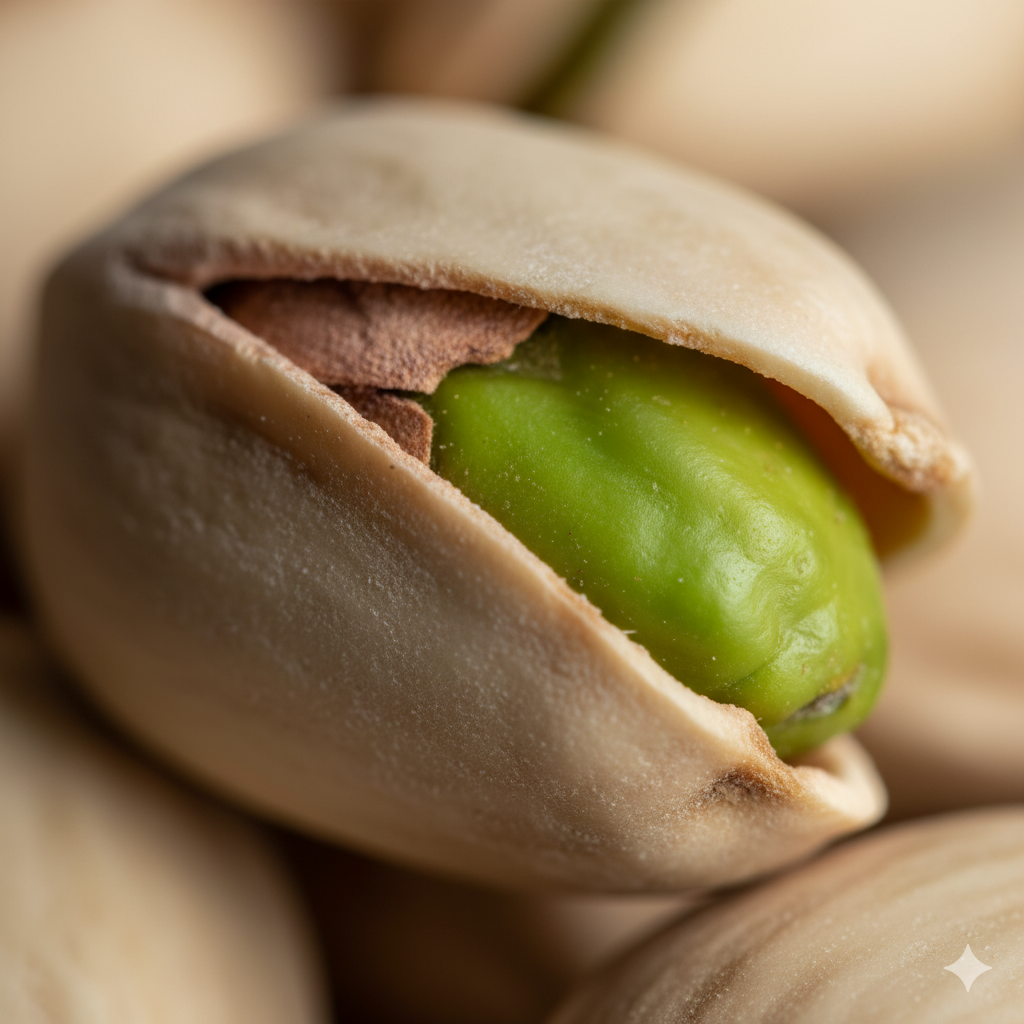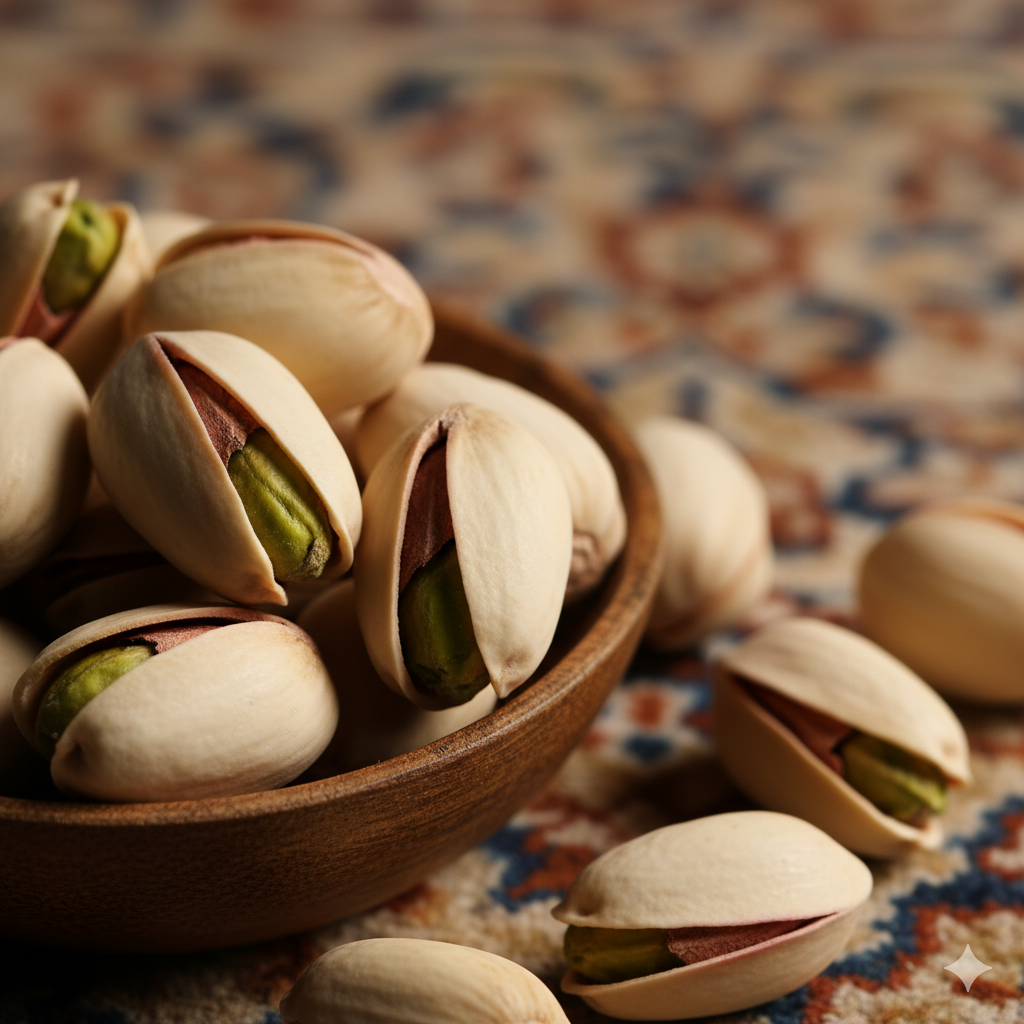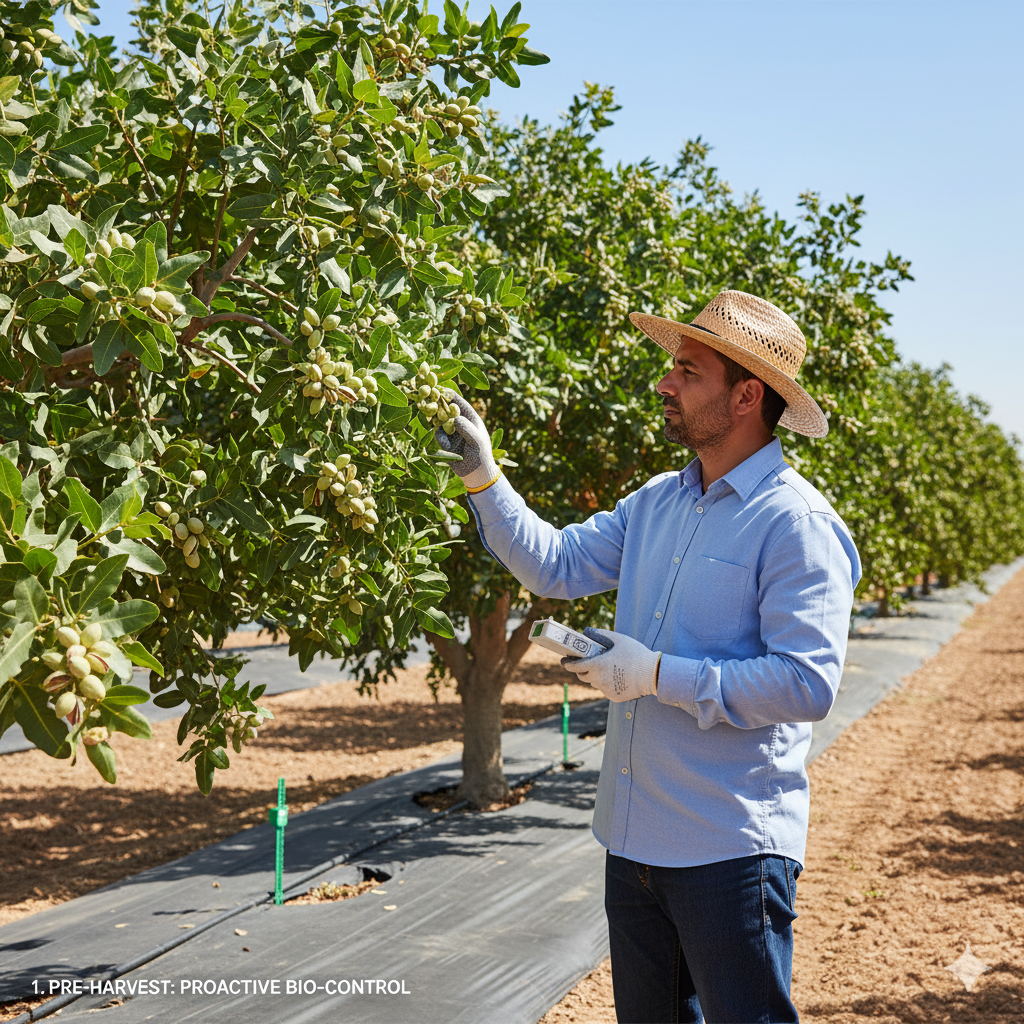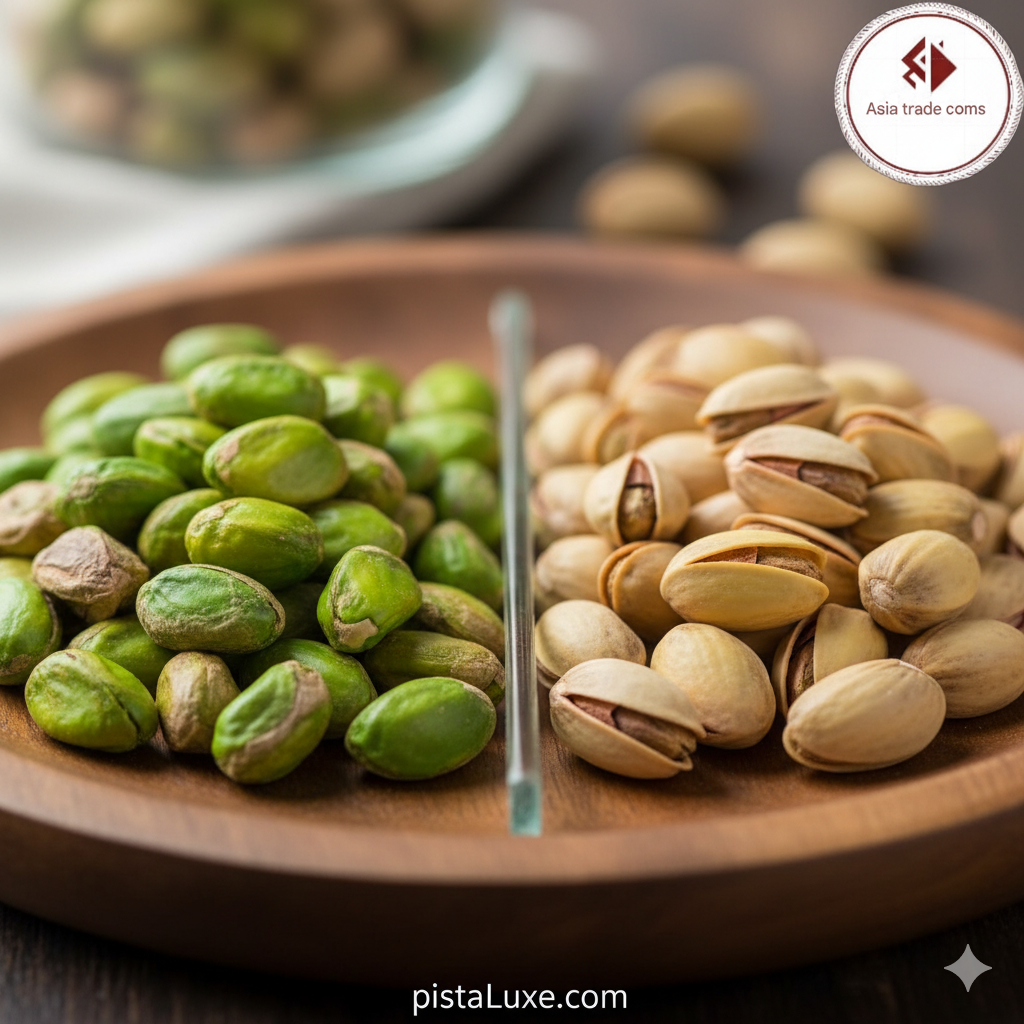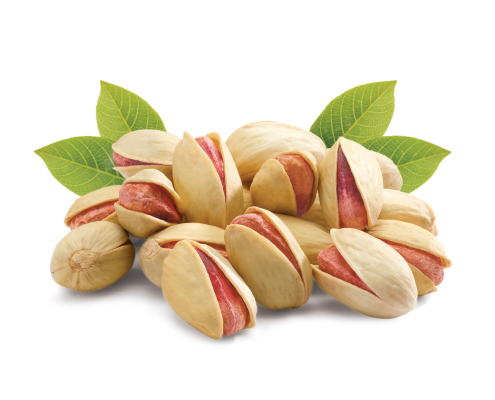
1. Culinary Introduction: The Delicate Flavor Profile
Pistachio oil is a gourmet ingredient celebrated for its distinct, luxurious taste profile. Unlike heavily flavored oils such as toasted sesame oil or pungent extra virgin olive oil, pistachio oil offers a nuanced complexity that elevates dishes without overpowering them.
Flavor Profile
High-quality, cold-pressed pistachio oil typically presents with:
- Nutty Sweetness: A pronounced, authentic flavor reminiscent of toasted pistachios.
- Subtle Earthiness: A mild, rounded background note that is not bitter or sharp.
- Color: Ranges from light yellow-green to a deep emerald green, indicative of its carotenoid and chlorophyll content.
Suitable Culinary Uses
Due to its relatively low smoke point (generally lower than standard olive or canola oils), pistachio oil is best utilized in applications where minimal heat is involved. High heat destroys its delicate flavor components and diminishes its nutritional integrity.
- Finishing Oil: This is where pistachio oil truly shines. Drizzled over grilled white fish, roasted vegetables (like asparagus or root vegetables), creamy soups (like butternut squash or potato leek), or even vanilla ice cream, it imparts an instant gourmet touch.
- Salad Dressings and Vinaigrettes: It pairs beautifully with mild vinegars (like white balsamic or champagne vinegar) and herbs such as tarragon or chives. Its inherent nutty character reduces the need for excessive added salt or sugar in dressings.
- Dipping Oil: Served alongside artisanal bread, often blended with a touch of sea salt.
- Sauces and Pesto: It can replace olive oil in specialized pestos (e.g., arugula or sun-dried tomato pesto) to introduce a richer, sweeter nut background.
2. Nutritional Profile: A Heart-Healthy Fat Source
Pistachio oil is renowned not just for its taste but for its superior fat composition, making it an excellent dietary addition for supporting systemic health. Its nutritional density far surpasses oils high in saturated fats.
The key components are the unsaturated fats: Monounsaturated Fatty Acids (MUFAs) and Polyunsaturated Fatty Acids (PUFAs).
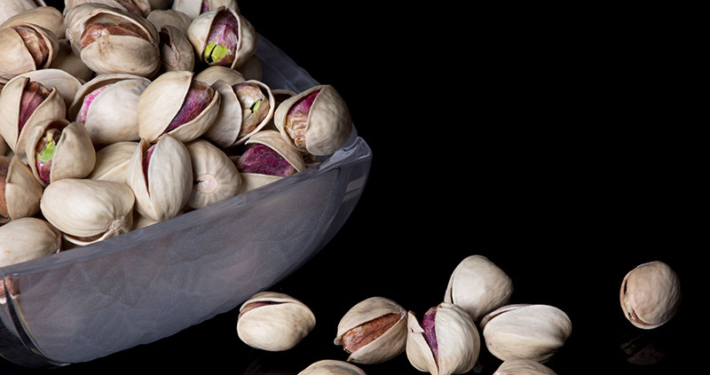
Monounsaturated Fats (MUFAs)
Pistachio oil is typically very rich in Oleic Acid, the same primary fat found in olive oil.
- Oleic Acid Content: Often comprising 60% to 80% of the total fat content. MUFAs are considered heart-healthy because they help manage inflammation and contribute to healthy cholesterol levels.
Polyunsaturated Fats (PUFAs)
Pistachio oil provides a good ratio of the essential Omega-6 fatty acids (Linoleic Acid) and a beneficial, though usually smaller, amount of Omega-3 fatty acids (Alpha-Linolenic Acid, ALA).
- Omega-6 (Linoleic Acid): Crucial for brain function, skin health, and metabolic regulation.
- Omega-3 (ALA): Though typically present in smaller quantities than in oils like flaxseed, the presence of ALA contributes to the overall anti-inflammatory profile of the diet.
The importance lies in the balance. While high consumption of Omega-6 without corresponding Omega-3 can be pro-inflammatory, pistachio oil’s profile, when incorporated into a balanced diet, supports overall cellular health.
3. Systemic Health Benefits
Regular, moderate consumption of pistachio oil contributes positively to several key areas of human physiology, primarily linked to its lipid structure and bioactive compounds.
Cardiovascular Health Support
The high concentration of MUFAs (oleic acid) is directly implicated in improving cardiovascular markers:
- Cholesterol Management: MUFAs help lower levels of low-density lipoprotein (LDL) cholesterol (often termed “bad” cholesterol) while maintaining or increasing high-density lipoprotein (HDL) cholesterol (“good” cholesterol). [ \text{LDL Reduction} \propto \text{Dietary MUFA Intake} ]
- Blood Pressure: The healthy fats, combined with phytosterols, contribute to better vascular elasticity, supporting healthy blood pressure regulation.
Anti-Inflammatory Action and Phytosterols
Pistachio oil contains significant amounts of phytosterols, plant compounds structurally similar to cholesterol.
- Cholesterol Absorption Blockade: Phytosterols compete with dietary cholesterol for absorption in the digestive tract. By binding to the same absorption sites, they reduce the amount of actual cholesterol that enters the bloodstream.
- Inflammation Reduction: Beyond the antioxidative effects of Vitamin E, the general profile of unsaturated fats supports systemic anti-inflammatory pathways, which is crucial for managing chronic diseases.
4. Comparison with Other Popular Cooking Oils
Pistachio oil occupies a premium space alongside other specialty oils. Here is how it stacks up:
FeaturePistachio OilExtra Virgin Olive Oil (EVOO)Avocado OilPrimary FatOleic Acid (MUFA)Oleic Acid (MUFA)Oleic Acid (MUFA)Flavor ProfileMild, sweet, distinct nutty finish.Pungent, peppery, grassy notes.Mild, buttery, very neutral.Smoke Point (Unrefined)Relatively Low (Approx. 325°F/160°C)Medium (Approx. 375°F/190°C)High (Approx. 520°F/270°C)Best UseFinishing, dressings, low-heat sautéing.General cooking, dressings, dipping.High-heat searing, frying, roasting.CostVery HighModerate to HighModerate
Pistachio oil wins when a sophisticated, sweet nutty note is required that olive oil’s bitterness or avocado oil’s neutrality cannot provide. Its lower smoke point makes it unsuitable for high-temperature cooking where EVOO or Avocado oil would excel.
5. Storage and Quality: Ensuring Purity
Given the high cost and delicate nature of cold-pressed pistachio oil, proper selection and storage are paramount to maintaining its flavor and nutrient profile.
Buying High-Quality Oil
- Look for Cold-Pressed: Always seek labels indicating “cold-pressed,” “virgin,” or “unrefined.” Avoid oils simply labeled “Pistachio Flavoring Oil,” which are often refined oils infused with artificial flavor.
- Check the Color: A light to medium green hue suggests a higher content of beneficial pigments and less processing.
- Source Verification: Reputable producers will clearly state the oil’s origin (e.g., Mediterranean or US-grown pistachios).
- Packaging: The oil must be packaged in dark glass bottles (green or amber) to protect it from light-induced oxidation. Never buy pistachio oil sold in clear plastic containers.
Storage Guidelines
Pistachio oil is highly susceptible to rancidity due to its high content of delicate unsaturated fats.
- Temperature: Store the bottle tightly sealed in a cool, dark pantry or cabinet. Refrigeration is recommended for long-term storage (over six months) to drastically slow down oxidation.
- Light and Air: Keep the bottle away from direct sunlight and heat sources (like the stove). Ensure the cap is immediately resealed after pouring to minimize exposure to oxygen.
- Shelf Life: Even when stored optimally, unrefined pistachio oil generally has a shorter shelf life than highly saturated oils, typically lasting 6 to 12 months after bottling. If the oil develops a sharp, waxy, or bitter smell, it has oxidized and should be discarded.
To order or get advice on pistachio and dried fruit varieties, contact our team via our official WhatsApp. Our support team is ready to answer your questions and can help you choose the right pistachio and dried fruit. WhatsApp number 009890214773705


